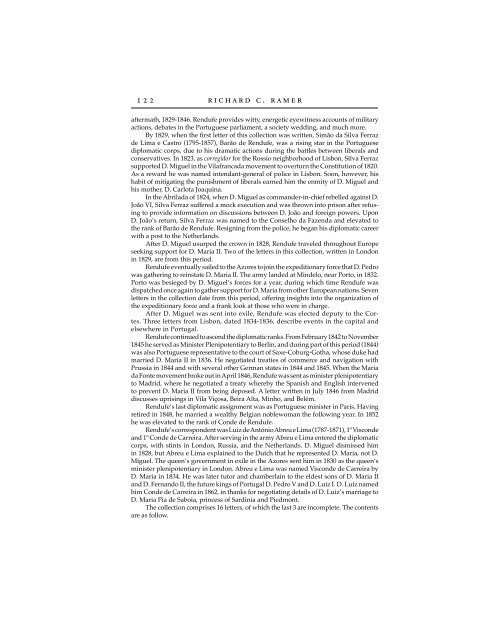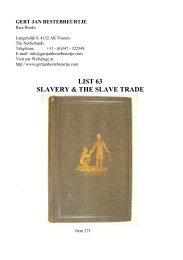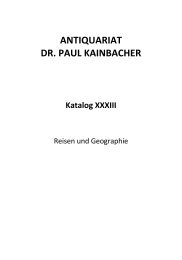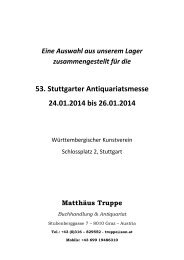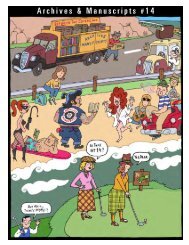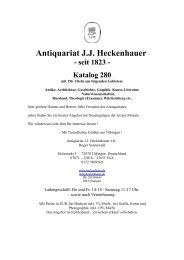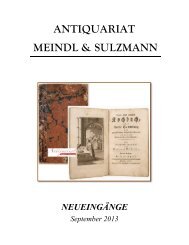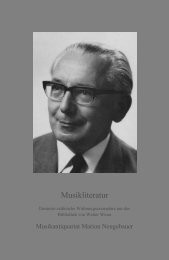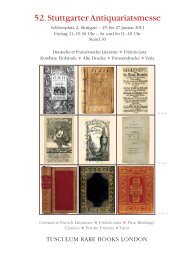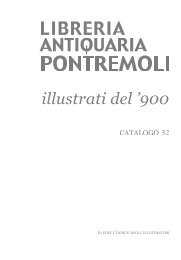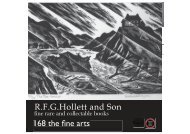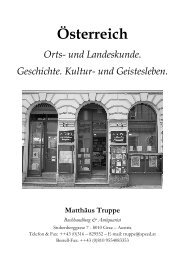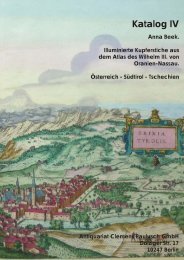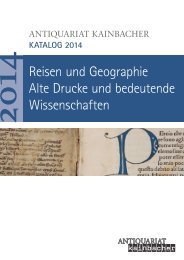Recent Acquisitions - Richard C. Ramer Old & Rare Books
Recent Acquisitions - Richard C. Ramer Old & Rare Books
Recent Acquisitions - Richard C. Ramer Old & Rare Books
You also want an ePaper? Increase the reach of your titles
YUMPU automatically turns print PDFs into web optimized ePapers that Google loves.
122<br />
richard c. ramer<br />
aftermath, 1829-1846. Rendufe provides witty, energetic eyewitness accounts of military<br />
actions, debates in the Portuguese parliament, a society wedding, and much more.<br />
By 1829, when the first letter of this collection was written, Simão da Silva Ferraz<br />
de Lima e Castro (1795-1857), Barão de Rendufe, was a rising star in the Portuguese<br />
diplomatic corps, due to his dramatic actions during the battles between liberals and<br />
conservatives. In 1823, as corregidor for the Rossio neighborhood of Lisbon, Silva Ferraz<br />
supported D. Miguel in the Vilafrancada movement to overturn the Constitution of 1820.<br />
As a reward he was named intendant-general of police in Lisbon. Soon, however, his<br />
habit of mitigating the punishment of liberals earned him the enmity of D. Miguel and<br />
his mother, D. Carlota Joaquina.<br />
In the Abrilada of 1824, when D. Miguel as commander-in-chief rebelled against D.<br />
João VI, Silva Ferraz suffered a mock execution and was thrown into prison after refusing<br />
to provide information on discussions between D. João and foreign powers. Upon<br />
D. João’s return, Silva Ferraz was named to the Conselho da Fazenda and elevated to<br />
the rank of Barão de Rendufe. Resigning from the police, he began his diplomatic career<br />
with a post to the Netherlands.<br />
After D. Miguel usurped the crown in 1828, Rendufe traveled throughout Europe<br />
seeking support for D. Maria II. Two of the letters in this collection, written in London<br />
in 1829, are from this period.<br />
Rendufe eventually sailed to the Azores to join the expeditionary force that D. Pedro<br />
was gathering to reinstate D. Maria II. The army landed at Mindelo, near Porto, in 1832.<br />
Porto was besieged by D. Miguel’s forces for a year, during which time Rendufe was<br />
dispatched once again to gather support for D. Maria from other European nations. Seven<br />
letters in the collection date from this period, offering insights into the organization of<br />
the expeditionary force and a frank look at those who were in charge.<br />
After D. Miguel was sent into exile, Rendufe was elected deputy to the Cortes.<br />
Three letters from Lisbon, dated 1834-1836, describe events in the capital and<br />
elsewhere in Portugal.<br />
Rendufe continued to ascend the diplomatic ranks. From February 1842 to November<br />
1845 he served as Minister Plenipotentiary to Berlin, and during part of this period (1844)<br />
was also Portuguese representative to the court of Saxe-Coburg-Gotha, whose duke had<br />
married D. Maria II in 1836. He negotiated treaties of commerce and navigation with<br />
Prussia in 1844 and with several other German states in 1844 and 1845. When the Maria<br />
da Fonte movement broke out in April 1846, Rendufe was sent as minister plenipotentiary<br />
to Madrid, where he negotiated a treaty whereby the Spanish and English intervened<br />
to prevent D. Maria II from being deposed. A letter written in July 1846 from Madrid<br />
discusses uprisings in Vila Viçosa, Beira Alta, Minho, and Belém.<br />
Rendufe’s last diplomatic assignment was as Portuguese minister in Paris. Having<br />
retired in 1848, he married a wealthy Belgian noblewoman the following year. In 1852<br />
he was elevated to the rank of Conde de Rendufe.<br />
Rendufe’s correspondent was Luiz de António Abreu e Lima (1787-1871), 1º Visconde<br />
and 1º Conde de Carreira. After serving in the army Abreu e Lima entered the diplomatic<br />
corps, with stints in London, Russia, and the Netherlands. D. Miguel dismissed him<br />
in 1828, but Abreu e Lima explained to the Dutch that he represented D. Maria, not D.<br />
Miguel. The queen’s government in exile in the Azores sent him in 1830 as the queen’s<br />
minister plenipotentiary in London. Abreu e Lima was named Visconde de Carreira by<br />
D. Maria in 1834. He was later tutor and chamberlain to the eldest sons of D. Maria II<br />
and D. Fernando II, the future kings of Portugal D. Pedro V and D. Luiz I. D. Luiz named<br />
him Conde de Carreira in 1862, in thanks for negotiating details of D. Luiz’s marriage to<br />
D. Maria Pia de Saboia, princess of Sardinia and Piedmont.<br />
The collection comprises 16 letters, of which the last 3 are incomplete. The contents<br />
are as follow.


